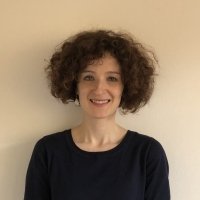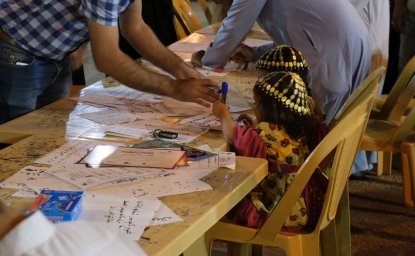Q: Describe your background and what brought you to the Wilson Center.
I am a journalist, writer, and researcher. I was born in Moscow in the early 80s when a portrait of the Bolshevik leader Vladimir Lenin still hung on the wall at my daycare. As I turned ten, the Soviet Union ceased to exist, a new country was born, and the lives of millions of people were turned upside down. That colossal, tectonic shift and Russia’s post-Soviet transformation has preoccupied me throughout much of my professional life. I have spent nearly 20 years working as a journalist, covering Russia, Ukraine, and other former Soviet states, as well as international affairs, business, and education. This fellowship at the Kennan Institute has allowed me to take a break from the daily grind of journalism and focus on more in-depth research.
Q: What project are you working on at the Center?
At the Kennan Institute, I am researching how women in Russia have been affected by the country’s post-Soviet transition and what part they took in it. More specifically, I am looking at women’s financial well-being, health, family and sex life, and political and civic activity.
Q: How did you become interested in your current research topic?
As I said above, I personally witnessed Russia’s post-Soviet transition and spent most of my career reflecting, researching, and writing about it. What got me to focus specifically on women’s experiences of that era was a newspaper story I came across in the late 90s about a small Russian village and a collective farm that was its lifeline. Most of the workers at the farm were women and most managers were men, as was standard practice in Soviet times. But after government funding dried up following the Soviet collapse, the farm was in ruins. The cattle were sold, but the proceeds vanished. Male workers went on a drinking spree. They stopped showing up for work and instead stripped the main building on the farm for wood. So the women rebelled: they seized control of the collective farm and put themselves in charge. The new director of the farm told the interviewer that running a collective farm had never been a dream of hers, but like other women in the village, she didn’t have time to dream — she had children to feed. This is when I knew I wanted to study this subject further.
Q: Why do you believe that your research matters to a wider audience?
In the era of the #MeToo movement, at a time when women are finally reclaiming their voices, studying women’s experiences— especially those that have been overlooked in the past— becomes all the more important. I believe the story of how Russian women lived through—to amend a quote from Vladimir Putin—one of the greatest geopolitical cataclysms of the twentieth century will be fascinating to those who are interested in the post-Soviet region as well as in women’s issues.
Q: What is the most challenging aspect of your research?
Serious gender and women’s studies did not come to Russia until the mid or late 90’s, which is both challenging and interesting. Also, as is the case for many people these days, I am sure, the coronavirus pandemic is making travel nearly impossible. I had planned to go to Russia and interview experts and stakeholders on the ground in person, but instead I talk to them over Zoom.
Q: What do you hope the impact of your research will be?
The experiences of women in Russia, and elsewhere around the world, have been overlooked for too long. That is especially true of the hardships that accompanied Russia’s painful post-Soviet journey, many of which fell on women’s shoulders. But the years that followed the collapse of the Soviet Union were also a time of unexpected opportunities, risk-taking, enthusiasm, and creative energy. Women went into business, politics, and activism. I believe their stories need to be examined.
The opinions expressed in this article are those solely of the authors and do not reflect the views of the Kennan Institute.






